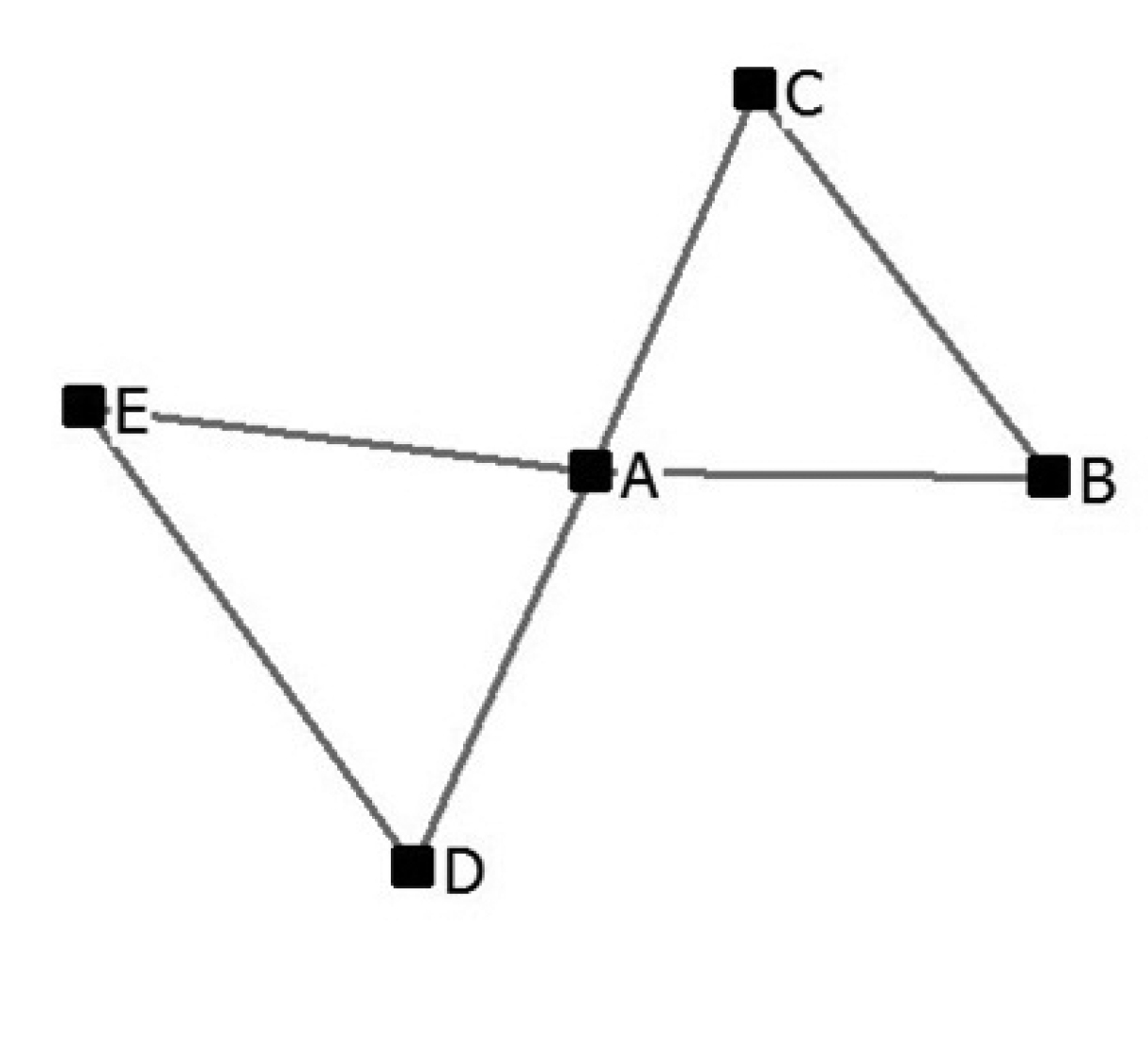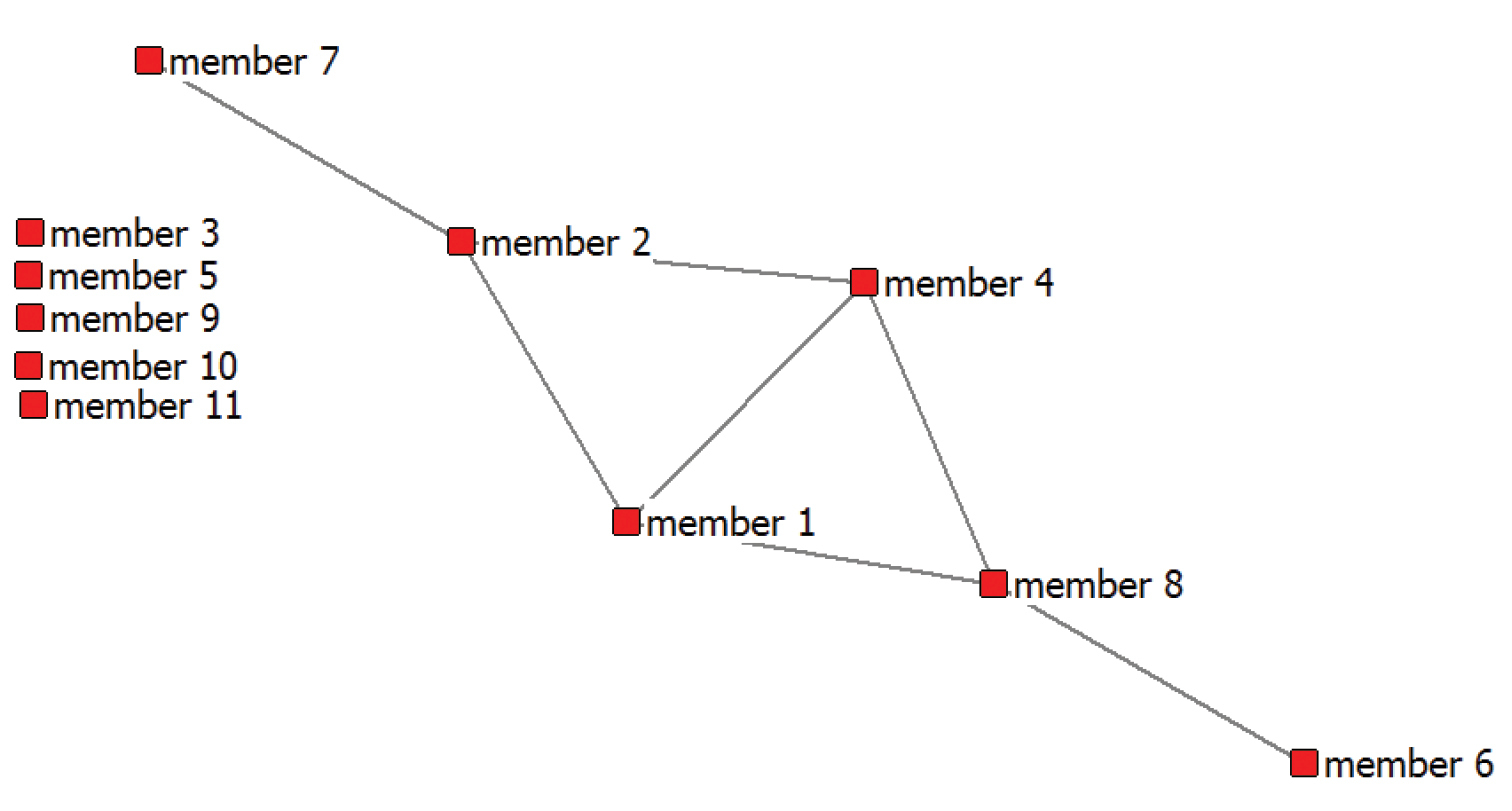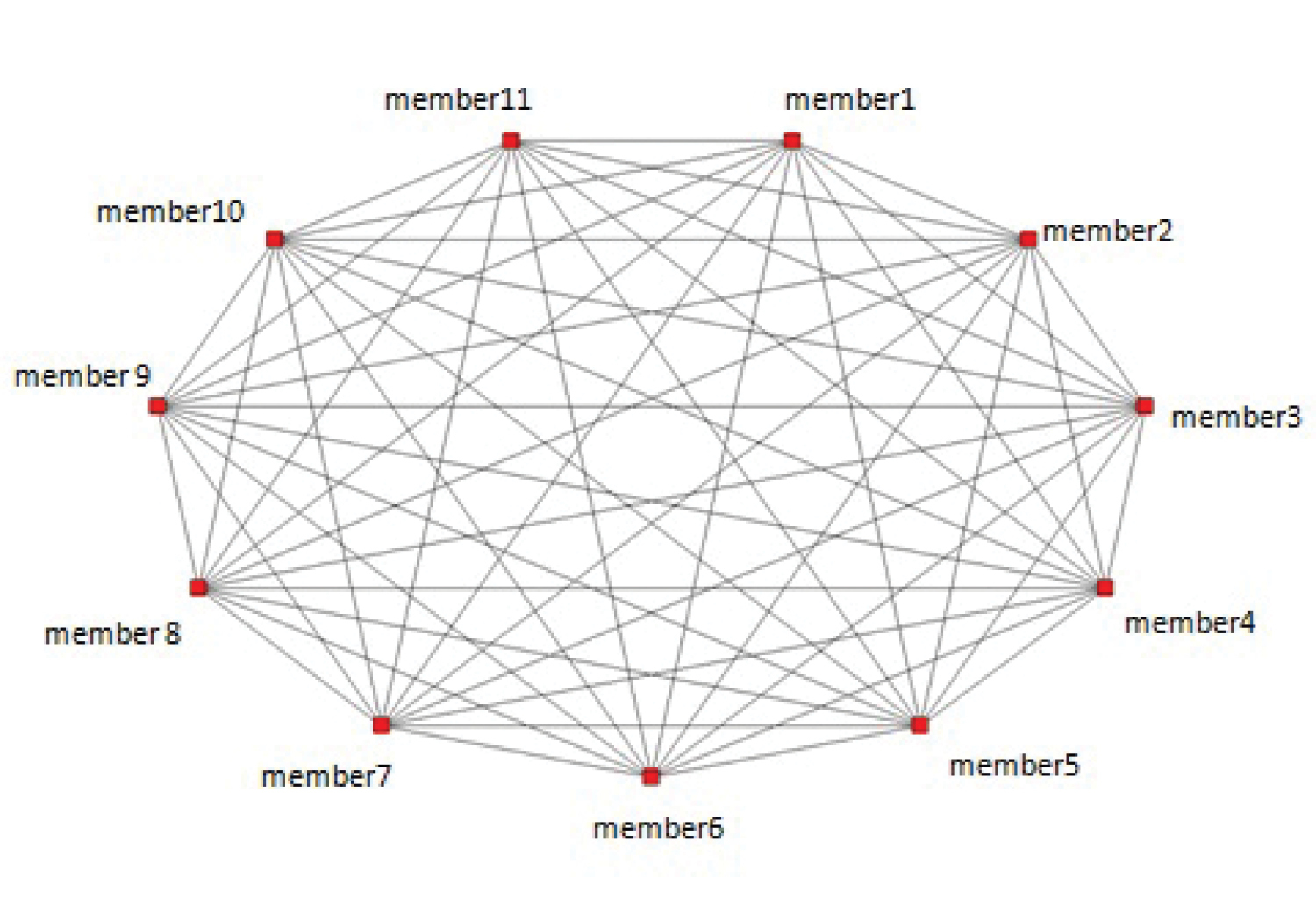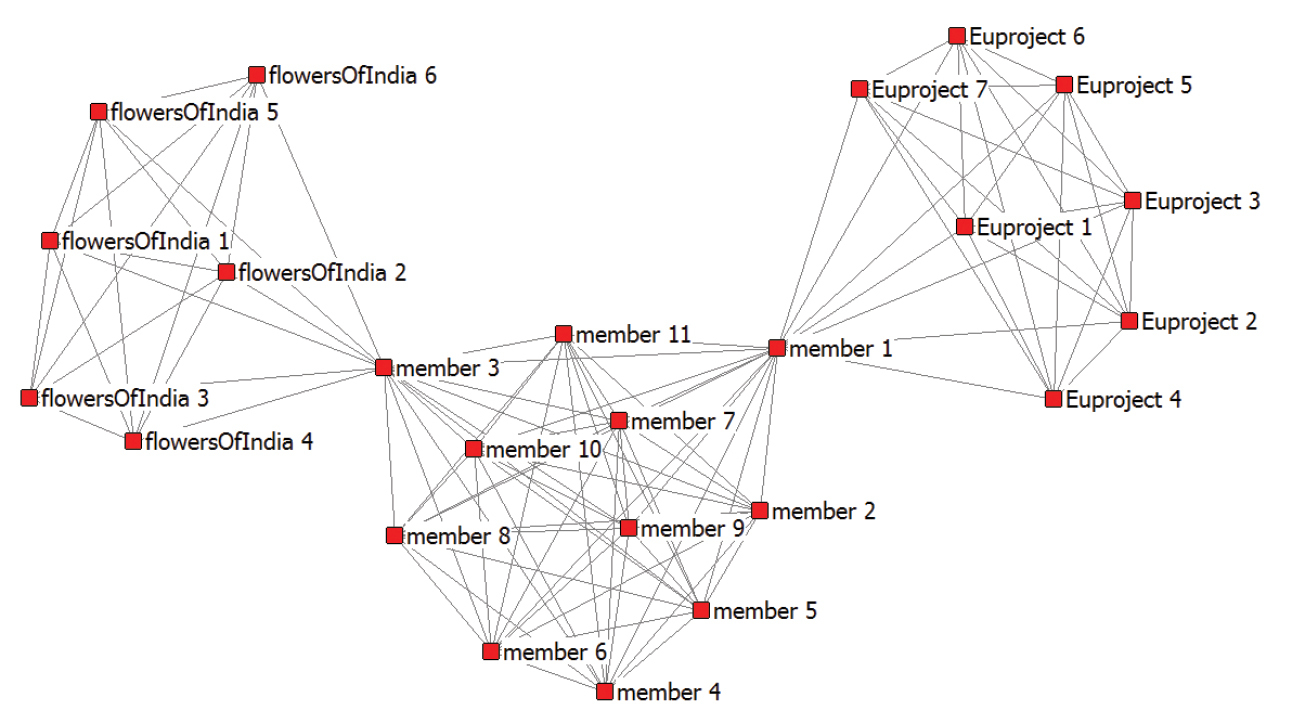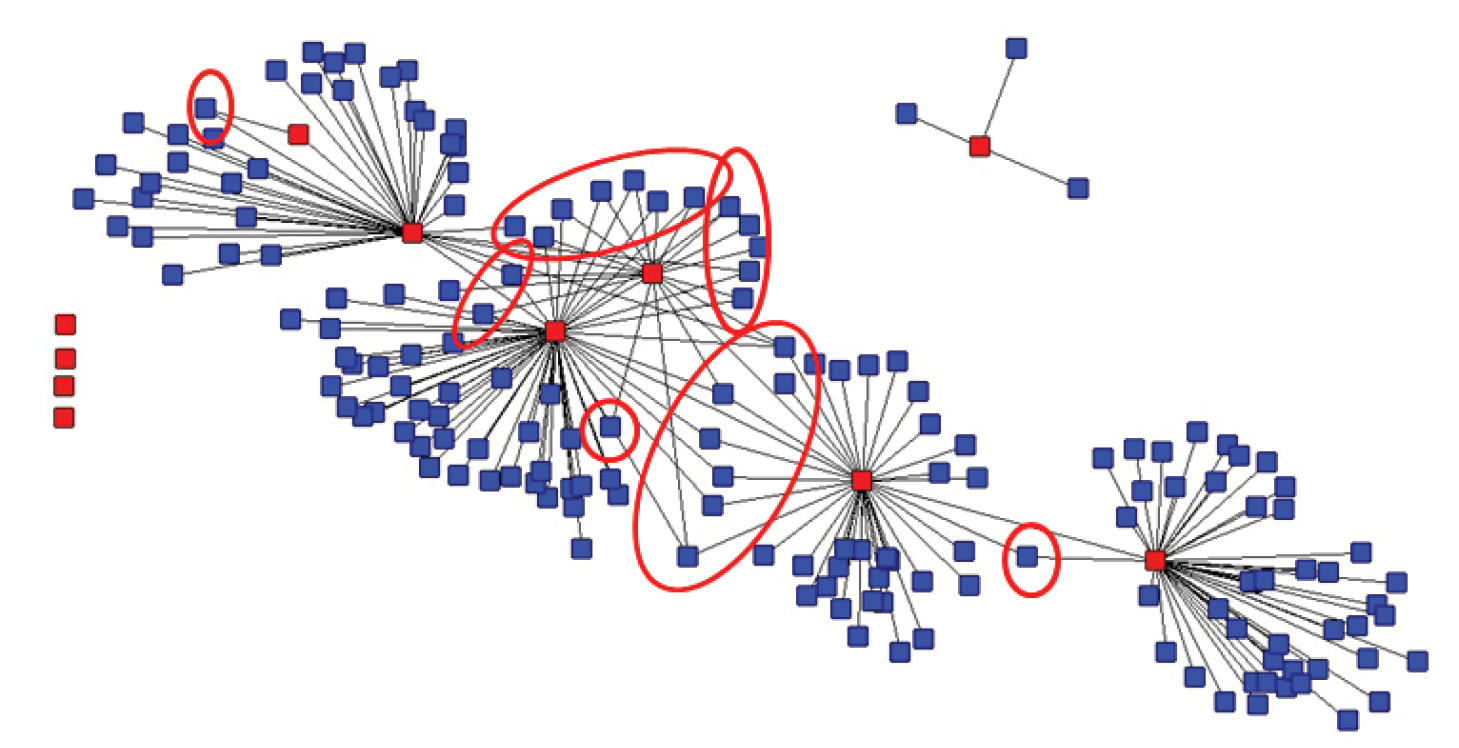






(C) 2011 Daphne Duin. This is an open access article distributed under the terms of the Creative Commons Attribution License, which permits unrestricted use, distribution, and reproduction in any medium, provided the original author and source are credited.
For reference, use of the paginated PDF or printed version of this article is recommended.
The research environment of scholars is increasingly web-based. This makes it urgent to study the effects of moving to the Web on research practices, scholarly output and innovation. We propose a theoretical framework and a methodology to study these effects. In a pilot study, we apply theory and method on an online community in biodiversity research, to demonstrate the feasibility of the approach. We also indicate the practical relevance of this kind of analysis for improving the quality of virtual research environments. In the last section, directions for further research are suggested.
Knowledge creation, users, scientific collaboration, Webscience, impact assessment, biodiversity and taxonomic research infrastructures, virtual communities of practice
Moving science to the (social) Web has generated excitement for its potential to support knowledge creating activities in research environments (
In the field of biodiversity research numerous Web based tools are currently available. The tools facilitate knowledge creation within the global expert community of biodiversity researchers and bioinformaticians. The tools allow users to do collaborative work on the Web. Users can create content, share data and have access to knowledge that was once only available to individual researchers, whether in paper achieves, on stand-alone computers or in difficult to access data systems of their institutions. Several of these kind of tools are supported under the 7th Frame work Programme
Within the context of a larger trend to move biodiversity to the Web (see also: Global Biodiversity Information Facility
In this paper we will zoom-in on the questions mentioned above. Our main aim is methodological. We will elaborate a method for studying the effects of web-based biodiversity research infrastructures on scientific collaboration, innovation, and performance. In what follows we will put forward a theoretical framework, discuss empirical data and a methodology - which we think will help in answering the question. To illustrate the possibilities and limitations of the methodology suggested we will discuss empirical data that we collected for a pilot study on one online community of the Scratchpad platform [http://scratchpads.eu/] and conclude with recommendations for further research.
Here we stressed why it is important to examine the effects of moving science to the Web. In the following paragraph we bring together previous research on the organisation of knowledge creation and discuss how we think we can use these findings in our own work.
Knowledge creationKnowledge creation is at the heart of the academic profession. Influencing the creation of new knowledge is a challenge for organisations as knowledge flourishes best when it is enabled, not managed (
Next to the contributions from knowledge management studies on innovation, also social network studies have also contributed important insights to our understanding of the conditions and constrains for knowledge creation. Scientists, like other professionals, bring more to work than skills and experience, “they also bring the assets they can procure through their social networks” (
Social network studies make use of sociograms to support their analysis. These are graphic representations of social links that a person has. Figure 1 is an example of a sociogram of structural holes that are linked by of one actor in a network, represented by node A at the centre of the graph.
The nodes are actors, the ties their connections. Actor A is a broker in this network because connects two groups that are otherwise unconnected (spans structural holes).
Social network studies show that brokers are valuable individuals for organisations. Brokers are people who have the capabilities to “”translate, coordinate and align between different perspectives (…) and address conflicting interest” (
Virtual research environments like
Today, online networks are important vehicles for knowledge sharing and learning in the workplace (
In summary, knowledge flourishes when knowledgeable people are brought together and interact. Especially the exchange of different but partly overlapping knowledge enables the creation of new knowledge within expert communities. Another important enabling condition that arises from the literature is the amount of social capital of individual actors as well as social capital kept within collective working groups (teams, labs, departments). The open question to be studied is whether Web 2.0 tools, such as
In this paper we will discuss a pilot study that examines the possibilities of a social network approach to study co-authorship and Scratchpad membership. But before we come to discuss our pilot study we will investigate the challenges of studying online social settings. Web data are still a relatively new empirical data source in the social sciences and there is some debate on how to collect and interpret data sets collected from the Web. In the following paragraph we will discuss some of the pros en cons of the use of web data to study organisation(s).
Brokerage and structural holes.
The Web has become a major medium for communication in science.
From a previous study that we did among the users we know that
Virtual Communities of Practice are a type of knowledge based social network whose members rely primarily on networked ICT’s in order to 1) discuss problems and issues associated with their day to day activities 2) collaborate on projects 3) share documents, solutions or good and bad practices, plan for face to face meetings or continue face to face relationships and work beyond face-to-face events (
The move of science to the Web leads to new questions regarding the impact of the online environment on scholars’ behaviour, relations, and scholarly output. It also provides us with new types of data and methodologies. The Web is constituted by a myriad of socio-technical interactions which often leave digital traces. Users of the Web leave digital footprints of their behavior and network relations. Their footprints can be found in web server log file data or in the information that is stored on institutional web pages and social network sites. Consequently “it forms an interesting, modern site for research ethnography” (
The use of such data sets for social research, like the digital footprints of researcher’s online activity, has several advantages. Firstly, the scale on which we can do research becomes much larger, as one can collect large datasets covering the actions of many users and over long periods of time and geographical distances. Secondly, research using such data is unobtrusive as the actors under study are not interrupted in their work by data collection activities. Thirdly, the data are observational, and not based on opinions only, such as in surveys and interviews. Fourthly, costs are potentially lower, as web data can be collected from behind a desk and are often freely available (cf.
As argued, the creation of new knowledge can be enabled by bringing a variety of knowledgeable people together in an environment that facilitates the interaction and exchange of heterogeneous and overlapping knowledge inputs. We carried out a pilot study on one Scratchpad community to explore this question and test our approach. The research questions are: 1) to what extent do
For both questions we build on ideas and techniques stemming from bibliometrics (cf.
The second question deals with the potential of the Scratchpad community to create new knowledge (span structural holes) and create favorable conditions to continue to exist over a long period of time (redundancy). For this question the Scratchpad community is taken as an analogy for a research team where every member brings in social capital in the form of their co-author network. This time we did not look at the co-author relations among the 11 members but to what extent their ego, co-author relations overlap. Do the Scratchpad members co-author with the same peers, or do they bring in their personal, unique co-author contacts?
Our case is a single Scratchpad which we give here the fictional name Livingcreatures.info. User registration coming from automated bots, so called spam-signs ups, were excluded from the analysis. The member list that we used included members’ personal details such as their affiliation and was used as the starting point of studying co-author relations. For each member we collected their publications over a period of 10 years, preceding their online collaboration in Livingcreatures.info. Publications were searched for and downloaded from the ISI Web of Science database and combined with publications from Google Scholar (using Publish or Perish). The Web of Science is a much more structured database, with for instance better name ambiguity filters than Publish or Perish. However the combination of both was thought important as biodiversity research is underrepresented in the Web of Science (cf.
The Scratchpad under study was launched early 2011. As for August 2011, this Scratchpad has 11 registered members, all male. Ten of the members were in the period of our analysis affiliated to one of the natural history institutions in the world, number 11 is mentioned in the acknowledgements as a private taxonomic specialist. Their institutional addresses are located in five different continents (3 in Europe, 3 in Asia, 2 in Africa, 1 in South America, 1 in Oceania). Together, these 11 Scratchpad members have 187 co-authors (including inter-group relations) with whom they collaborated in the period from 2001-2010. Table 1 gives the breakdown of the publications of the group. Together they contributed to 135 publications in ten years. Four Scratchpad members have no co-author relations. The information that we found during our web search suggests that this may be explained by individual characteristics. From the web data we learnt that two of them are early career researchers, number three is in a non-research position in a research institute, and number four is a volunteer researcher. Table 1 shows the details about the publications and co-authors of the 11 members.
We collected and analyzed the co-author data of the members of one Scratchpad and applied a social network approach to the data in order to get a better understanding of the effects of moving biodiversity research to the Web. In the next paragraph we discuss the results of the analysis.
Scratchpad members†, number of papers and their co-authors. ( 2001-2010).
| Scratchpad members | number of publications | number of unique co-authors | number papers with one author | number of papers with co-authors | number papers with > 2 authors | max number of co-authors on 1 paper |
|---|---|---|---|---|---|---|
| Group total | 135 | 180 | 18 | 117 | 80 | - |
| member 1 | 30 | 66 | 3 | 27 | 18 | 19 |
| member 2 | 18 | 40 | 4 | 14 | 13 | 9 |
| member 3 | 0 | 0 | 0 | 0 | 0 | 0 |
| member 4 | 16 | 21 | 1 | 15 | 14 | 6 |
| member 5 | 0 | 0 | 0 | 0 | 0 | 0 |
| member 6 | 1 | 3 | 0 | 1 | 1 | 2 |
| member 7 | 17 | 52 | 1 | 16 | 11 | 16 |
| member 8 | 70 | 40 | 9 | 61 | 36 | 4 |
| member 9 | 0 | 0 | 0 | 0 | 0 | 0 |
| member 10 | 0 | 0 | 0 | 0 | 0 | 0 |
| member 11 | 3 | 4 | 0 | 7 | 1 | 2 |
† Members from 1 Scratchpad site. Group total is not the sum of the cells, several members have collaborated on the same publication
We operationalised the two research questions in the following way: Does Scratchpad membership: i) connect people that were otherwise not connected; ii) provide network conditions that are beneficial for the creation of new knowledge and conditions for stability, that is, does the Scratchpad link researchers from different but not too different fields?
Do Scratchpad connect?We used UCINET6 (
What does the network show? The graph shows that six of the members are connected through co-author relations. They do not form a dense clique as they do not connect all co-authors with each other. Of these six, four have published with three others in the group, the two members positioned at the tips of the graph have published with only one other group member. The four members (1, 2, 4, 8) in the center of the graph (with each three links) already were acquainted with one of the co-authors in the co-author network of their fellow Scratchpad member. On the other hand the two members in the tips seem more “peripheral players” in this network.
Figure 2 also shows that the Scratchpad connects the five isolated members (3, 5, 9, 10, 11) with each other and with the members that already co-authored before they joined the Scratchpad. In other words, the five isolates are each connected to 10 potential “new” peers. If we compute in a similar way a sociogram of the Scratchpad this would look as followed, see figure 3. In the Scratchpad the 11 members are all linked to each other by membership of the same community. Note that a membership tie is different from as a co-author tie. A membership tie refers to sharing common interests and resources, a co-author tie refers to jointly producing a publication.
We studied the network of a particular Scratchpad community in isolation, not taking into consideration a possible overlap between different
In the next step, we extend the co-author network of the members with the co-author relations from outside the Scratchpad. The question is whether including these links changes the network topology, and whether the isolates are still isolates in the larger co-author network.
Graph of co-author ties† between the members of the Scratchpad Livingcreatures.info‡. (2001-2010).† Data sources: Web of Science and Publish or Perish. ‡ For privacy reasons we use a fictional name.
Graph of membership ties among Scratchpad members Livingcreatures.org
Livingcreatures.info and ties with two other
The literature discussed above concludes that a main enabling condition for knowledge creation and innovation is the prevalence of a mix of overlapping and diverse types of knowledge inputs that are exchanged.
In red we still see the Scratchpad members. The layout is similar to Figure 2 to facilitate comparison. In blue we have the authors that are not in the Scratchpad. The red circles indicate those non-members that co-author with more than one Scratchpad member. Adding the external co-authors does not change much how the Scratchpad members are linked. The four core members have several indirect relations, in contrast to the more marginal members who lack these indirect links. Member 9 has his own small network. Adding the external authors did not link him to the large component. The other four members are the isolates, nodes without any co-author relations with other nodes.
Table 2 shows the number of the shared co-authors for each of the members. Note that the co-author relations between Scratchpad members are not included. Seven Scratchpad members have co-authors who are also co-authors of other members. The number of ‘overlapping connections’ (redundancy) ranges between 1 (for members 6, 7, and 11) and 3 (members 1, 2, 4, and 8).
Table 2 shows us that there are only a few shared co-authors and most of the 180 co-authors (see Table 1) are not shared by the Scratchpad members. The average number shared co-authors do not differ much among them. Total number of redundant connections that are brought in by the members is much lower than their contribution to bringing in new co-authors and so span structural holes. Redundancy as mentioned here refers to the Scratchpad level, meaning that overlapping co-authorships are redundant for the social capital of the Scratchpad community as a whole. At the level of the individual actor however the connection might have an added value. Redundancy at the network level will rise when Scratchpad members increase their collaboration with the same co-authors from outside the Scratchpad or when co-authors would decide to join the Scratchpad. Redundancy in the Scratchpad network will secure “access” to a specific co-author or group of authors. The goals that the Scratchpad members have set will define if more redundancy (more overlapping connections) at the network level is useful for the group.
The shared co-authors are also interesting because they are part of the professional networks of several of the Scratchpad members, and therefore they may have an interest to join the Scratchpad. The network suggests that they would contribute to intensifying interaction and to the exchange of knowledge. Adding them to the network will add a second type of redundancy and therefore stability. However, from an innovation point of view, adding redundant actors to a network is wasted energy.
We conclude that the Scratchpad under study is a rather globally distributed Virtual Community of Practice in biodiversity research, some members have a long record of publications and others have a much shorter list (see Table 1), possibly because they just starting their academic career. Also from Table 1 we conclude that the Scratchpad members of this community have a collaborative attitude. Their publication behavior demonstrates that they are used to collaborate with several authors on one paper, running from two authors up to 19 authors on a paper. When comparing co-author relations and Scratchpad membership we see that signing up for the Scratchpad has created new ties for every one of the 11 members, though some gained more new connections than others. Scratchpad members do share co-authors from outside with their fellow Scratchpad members, showing that the two knowledge networks (author network, Scratchpad network) partially overlap. However, most co-authors of every Scratchpad member are new to the other members, suggesting that members bring in not only similar but also different knowledge sources and skills. Depending on the goal of the Scratchpad the members could try to increase either the overlapping - either the diverse types of knowledge inputs at the network level (redundancy versus spanning structural holes).
Of course, co-author ties and Scratchpad networks only form two of many types of networks of researchers. Other networks (e.g. based on organisation membership, committee membership etc.), may change the network configuration, and therefore may show a different role and effect of
Graph of co-author ties† between the members of the Scratchpadlivingcreatures.info‡. (2001-2010). † Data sources: Web of Science and Publish or Perish. ‡ For privacy reasons we use a fictional name.
Scratchpad members and number of co-authors they share with fellow members. (2001-2010).
| Scratchpad members Livingcreatures.info | Number co-authors † shared with fellow members |
|---|---|
| member1 | 3 |
| member2 | 3 |
| member3 | 0 |
| member4 | 3 |
| member5 | 0 |
| member6 | 1 |
| member7 | 1 |
| member8 | 3 |
| member9 | 0 |
| member10 | 0 |
| member11 | 1 |
† Data sources: Web of Science and Publish or Perish.
This paper aimed to explore what theoretical framework, method and data can be used to study the effects of the increasing role of web-based research environments on the practice, innovation and performance of biodiversity researchers.
We used the rich body of theories on organisational dimensions of knowledge creation, which suggests enabling conditions for knowledge production and innovation. The design of
As science moves to the Web, the behavioral footprints of scientific work practice are more and more available as (secondary) web data. Web data are an inexpensive way to ‘observe’ the behavior of large groups of people. From
From our pilot study we learnt that through computing of relatively simple graphs, we get a better understanding of the effects of Scratchpad membership on scholarly networks. It enables us to compare characteristics of Scratchpad networks with e.g. co-authors. Our analysis suggests that
Analyzing the number of shared co-authors among members of Scratchpad Livingcreatures.info indicates that the members form a loosely collaborating group of researchers. However, if we also take into consideration the collaboration between the members, the network seems denser. Some Scratchpad members were already collaborating before joining the Scratchpad, however most co-author relations are from outside the Scratchpad community. In other works, the Scratchpad partly reinforces already existing relations, but also creates new links for those members that were not yet included in the co-author network.
Our pilot study shows that the selected approach is promising. In the next phase we will extend the study in several ways. Firstly, we used data on only one Scratchpad. We plan to repeat the analysis for a large set of
These questions are not only theoretical relevant, but may also be useful in the practice of organising
